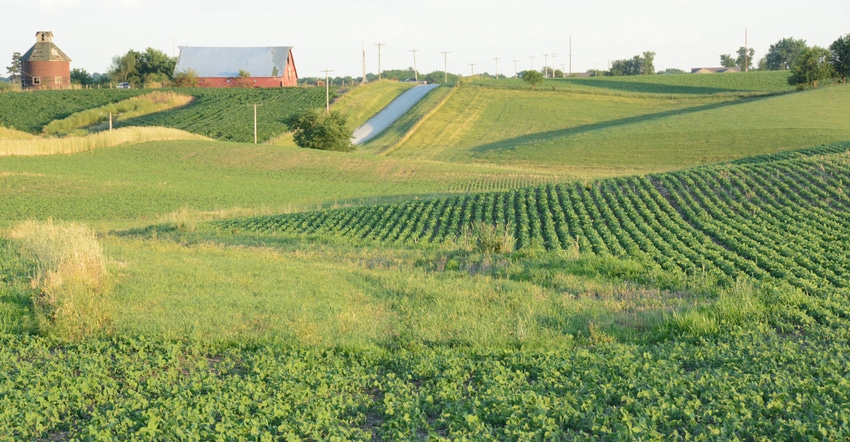February 3, 2020

Editor’s note: This is the second in a three-part series on water in Illinois. You can find Part 1 here and Part 3 here.
Water has power and unavoidable connections with Midwestern agriculture. Last month, I talked about how our waters have reshaped the land for thousands of years — with and without the influence of people. Again, I’m not suggesting we should avoid living near bodies of water or that we make no attempts to manage them. But we need to understand how these natural systems behave, and take that behavior into account as we build and manage.
It’s not just the big water that has the power to impact our lives, and it’s not always some kind of major event that impacts us. Normal precipitation can impact agricultural systems, too. Reducing erosion is a large part of our mission at the Natural Resources Conservation Service. That task includes managing water from both storm events and normal precipitation. Erosion is a natural process. Without erosion, we wouldn’t even have soil. As conservationists, we’ve had to make it our goal to manage the accelerated erosion caused by our farming activities.
Before large-scale farming, most land was covered by vegetation. Vegetation is a great erosion reducer because plants:
absorb the impact of rainfall, reducing detachment of soil particles
slow the flow of runoff with their physical structure, reducing the water’s energy to further detach and transfer soil particles
allow more water to infiltrate into the soil, reducing the amount of water lost as runoff
use roots to physically and chemically hold soil in place
Our farming practices from the past 200 years focused largely on removing native vegetation to plant crops. Those farming processes dramatically accelerated erosion. Sure, we’ve established a system of land capability classes to help us make decisions about the best use of the land, but many of our conservation practices are an attempt to mitigate the removal of vegetation on farmed fields. With bare, uncovered fields, we can see significant amounts of soil movement even on lands not classified as highly erodible. Because most accelerated erosion is caused by water, our conservation practices in the Midwest are designed to manage the flow of water.
Managing more water
We usually have plenty of precipitation around here, so when it comes to crop production, many farming practices are designed to remove water from the field. Tile drains and ditches help remove excess water as quickly as possible, but if we’re not careful, we can accelerate the loss of soil and nutrients along with all that fast-moving water.
We farm across the slope to slow runoff by creating till ridges. We leave crop residues on the soil surface to absorb the impact of raindrops and slow runoff. We even construct terraces to slow and capture runoff and divert water to underground outlets or to grassed waterways. Grassed waterways are designed with permanent vegetation to reduce erosion where water concentrates and slowly flows off the field. The challenge is finding that sweet spot where we get water off the field before it causes yield reduction but slow enough that we don’t cause excessive erosion — or create problems for other people downstream.
Sometimes we remove water off fields so quickly, it overloads natural streams and rivers on a regular basis, digging stream channels deeper and creating more capacity. That can straighten streams and get the water moving even faster. Inevitably, there is some obstacle where water removal is slowed, and we find we’ve just caused a flooding problem somewhere else.
So, are we blind to the problem? Are we doomed to fail whenever we try to tackle nature? I’ll have to teeter on the edge of the waterfall for now and pick things up in Part 3.
Dozier is the Illinois state conservationist. Direct comments or questions to [email protected].
About the Author(s)
You May Also Like




